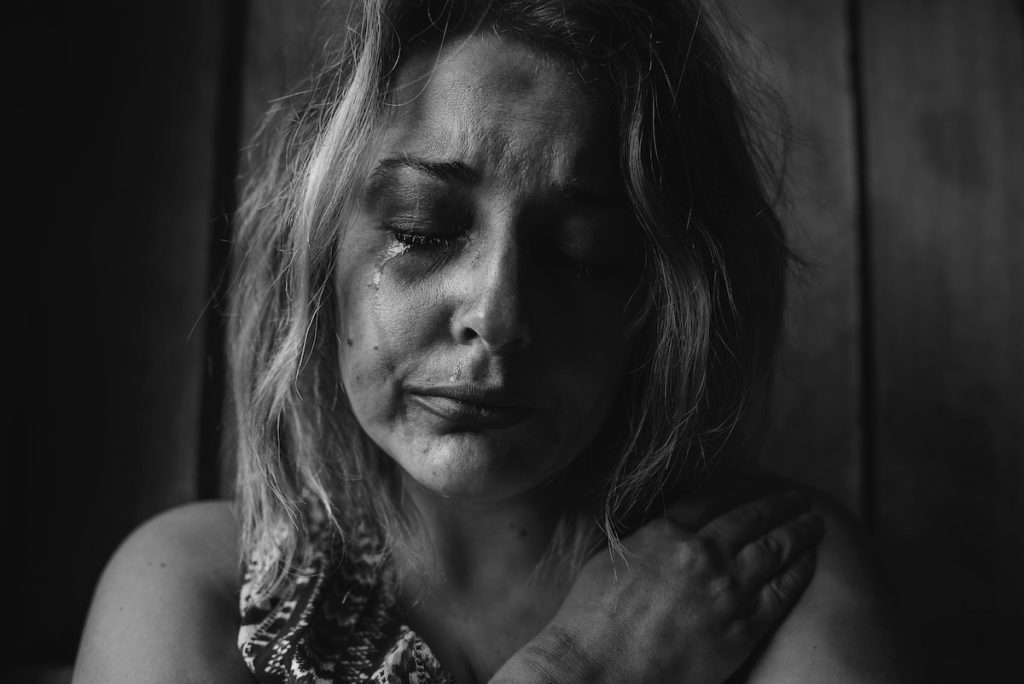
Previous research among people with mental illness has predominantly focused on crime perpetration, rather than crime victimization (Teplin et al, 2005). Similarly, the Mental Elf has blogs reporting how people with personality disorder are significantly more likely to reoffend and people with psychosis are more likely to reoffend; however, this academic focus coupled with selective media reporting can skew public conception and perpetuate stigma (Dean et al, 2018).
Earlier studies have indicated that people with severe mental illness are more likely to be victims of violent and non-violent crime; however, less is known about how this varies across the psychiatric diagnostic spectrum. Furthermore, previous research has established links in the causal role of developing of mental illness and being subjected to crime (especially early-life trauma and abuse (Spataro et al, 2004)); yet, less is known of the potential for mental illness to increase vulnerability to such crime.
Refreshingly, Swanson and Belden (2018) compare two studies about crime victimization in mental illness head-to-head: Dean et al (2018) and Teplin et al (2005), drawing cross-cultural differences in Denmark versus the United States, respectfully.

Previous research has focused more on people with mental illness being perpetrators of crime, rather than victims of crime.
Methods
To understand Swanson and Belden’s (2018) analysis we must examine the methodology of the two studies:
Denmark
Dean et al (2018) implemented a national cohort study of more than 2 million Danish mental health service users, born between 1965-1998. They investigated the incidence of crime victimization, after the onset of mental illness, across the full diagnostic spectrum, by using population registry data.
United States
Teplin et al (2005) implemented an epidemiological study of 936 current mental health service users in outpatient, day and residential treatment settings in Chicago. They investigated the incidence of crime victimization by sex, ethnicity and age controlling for income and demographic differences.
Swanson and Belden’s (2018) comparison of incidence rate ratios attempts to quantify the impact of poverty and the safety net. This is ambitious considering that although both countries are Western, neo-liberal, democratic countries there are major cultural and methodological differences. Swanson and Belden (2018) are limited in their choice of papers to draw such a comparison since, as previously mentioned, few studies have investigated mental illness and crime victimization, especially on a national level. In this respect, the most relevant and high-quality studies are used out of a lack of choice.
Results
The results of each study vary massively:
Denmark
Dean et al (2018) investigate a cohort of 2,058,063 (48.7% male; 51.3% female) with any mental disorder.
The adjusted annual incidence rate ratios for being a victim of any crime was 1.49 (95% CI, 1.46 to 1.51) for men and 1.64 (95% CI, 1.61 to 1.66) for women:
- 6% annual incidence rate of men and women being a victim of crime
Incidence rate ratios were higher for being subjected to violent crime at 1.76 (95% CI, 1.72 to 1.80) for men and 2.72 (95% CI, 2.65 to 2.79) for women:
- 2% annual incidence rate of men and women being a victim of violent crime
United States
Teplin et al (2005) randomly selected 936 patients from 16 randomly selected mental health agencies.
They found more than one quarter of participants with SMI had been victims of a violent crime in the past year, a rate of more than 11 times higher than the general population (US Bureau of the Census, 1994), after controlling for demographic differences (P<.001):
- 3% annual incidence rate of male and female psychiatric outpatients being victim of crime.
The annual incidence of violent crime in the SMI sample (168.2 incidents per 1,000 persons) is more than 4 times higher than the general population rates (39.9 incidents per 1,000 persons) (P<.001). Depending on the type of violent crime (rape, sexual assault, robbery, assault and their subcategories), prevalence was 6 to 23 times greater among persons with SMI than among the general population:
- 8% annual incidence of male and female psychiatric outpatients being victim of violent crime.

These two studies conducted in Denmark and the US produced very different results, but are the findings comparable?
Conclusions
Authors acknowledged that “methodological differences between the studies may account for the highly discrepant results.” In fact, the differences between the two countries are far greater than those between psychiatric patients and the general public.
Despite these differences, Swanson and Belden’s (2018) findings indicate populations with mental illness are significantly more at risk of being subjected to crime. Namely, experiencing mental health difficulties in the United States appears to increase the risk of being subjected to crime by approximately 4.8 times more than it does in Denmark.
Strengths and limitations
Firstly, the analysis is limited due to the varying quality of data between studies; the crimes people experienced must either have been reported to the police in Denmark or self-reported to researchers in the US. Both methods of gathering data may not represent a true reflection of actual rates.
Secondly, both studies rely on the medical model and functional psychiatric diagnoses which, according to the British Psychological Society DCP Position Statement (2013), provide “limited reliability and questionable validity, provide a flawed basis for evidence-based practice, research, intervention guidelines and the various administrative and nonclinical uses of diagnosis” (p2). Teplin et al (2005) includes participants diagnosed with ‘severe mental illness’ (psychosis or major affective disorder), excluding participants with anxiety, behavioural disorders, substance use disorders, adjustment disorder and sexual dysfunction, thereby limiting generalisability across the psychiatric spectrum.
All being considered, this is the first analysis comparing national incidence rates of crime victimization within populations with mental illness. Authors compare investigations each of which have solid methodology, large cohorts and rigorous results. For instance, Dean et al (2005) controls for family education and income, compensating for the well-established association between mental illness and low socioeconomic status, and therefore risk of exposure to crime. Ultimately, the analysis asks more questions than it provides answers, hopefully sowing the seeds for further research.

Ultimately, the analysis asks more questions than it provides answers, hopefully sowing the seeds for further research.
Implications for practice
Should we really be surprised that if you have mental health difficulties in the ‘Land of the Free’ you are significantly more likely to experience crime than you would in Denmark?
Perhaps not; compared with Denmark the United States has more factors that increase crime (poverty and inequality), and less factors that might decrease it (universal health insurance and a robust social safety net) (Demos, 2015).
This study raises important questions of policy. For instance, Dean et al (2018) find the strongest associations with victimization among people diagnosed with substance use disorders and personality disorders (Dean et al, 2018). It is therefore striking that this vulnerable population are not dissimilar to that currently found in UK prisons, with the prevalence of personality disorders around 70% (National Offender Management Service and NHS England, 2015), and substance misuse ‘widespread and significant’ (Light et al, 2013).
Swanson and Belden (2018) call for further research and intervention development. In the meantime, other countries may benefit from understanding how their own cultural factors can reduce the elevated risk of mentally unwell people being subjected to crime.

This Danish research (Dean et al, 2018) finds that people diagnosed with substance use disorders and personality disorders are strongly linked with being victims of crime.
Links
Primary paper
Swanson, J., Belden, C., (2018) The Link Between Mental Illness and Being Subjected to Crime in Denmark vs the United States: How Much Do Poverty and the Safety Net Matter? JAMA Psychiatry. 75(7) 669–670
Other references
Teplin, L., McClelland, G., Abram, K., Weiner, D., (2005) Crime victimization in adults with severe mental illness: comparison with the National Crime Victimization Survey. Archives of General Psychiatry, 62(8) 911-21 doi.org/10.1001/archpsyc.62.8.911
Dean, K., Laursen, T., Pedersen, C., Webb, R., Mortensen, P., Agerbo, E., (2018) Risk of Being Subjected to Crime, Including Violent Crime, After Onset of Mental Illness: A Danish National Registry Study Using Police Data. JAMA Psychiatry. 75(7) 689–696
Spataro, J, Mullen, P., Burgess, P., Wells, D., Moss, S., (2004) Impact of child sexual abuse on mental health: prospective study in males and females. British Journal of Psychiatry 184:416-421.
US Bureau of the Census (1994) Technical Background on the Redesigned National Crime Victimization Survey. Washington, DC. Accessed 18 Sep. 2018.
Demos. (2015) United States vs. Denmark, in 17 Charts. Accessed 13 Sep. 2018.
National Offender Management Service and NHS England (2015), Working with Personality disordered offenders: A practitioners guide (PDF). Ministry of Justice, London
Light, M., Grant, E., Hopkins, K., (2013) Gender differences in substance use and mental health amongst prisoners (PDF). Ministry of Justice Analytical Services, London.
Photo credits
Photo by Angelo Pari on Unsplash
